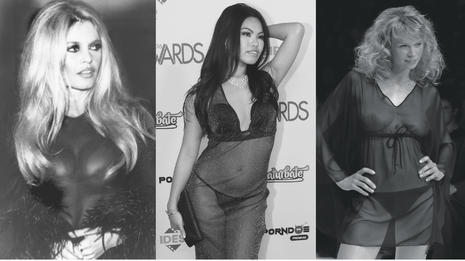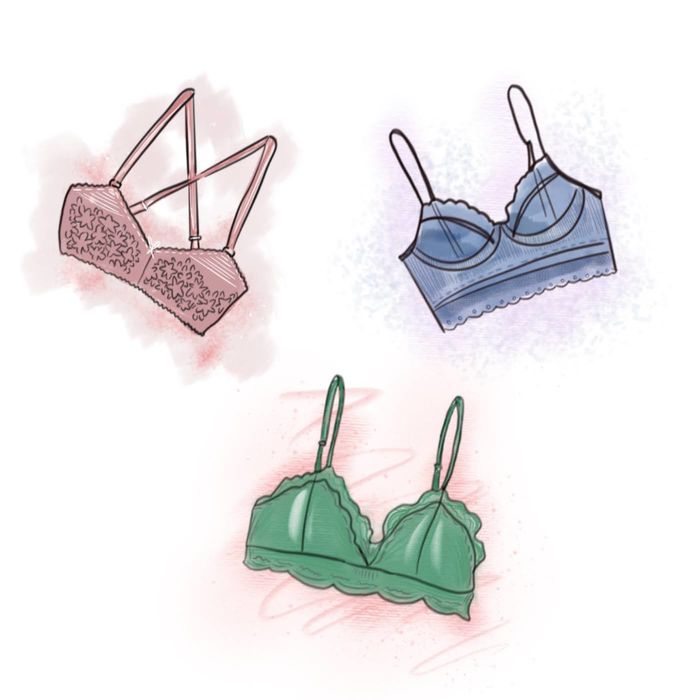Naked and notorious: the history of the ‘naked dress’
Fashion Editor Kasia Truscott explores the debate surrounding fashion’s most controversial dress

Content Note: This article contains brief mention of sexual assault.
If there’s one thing everyone can agree on when it comes to the so-called ‘naked dress’, it’s that it’s never not going to strike up a storm of conversation. From Marilyn Monroe’s sheer Jean Louis number, worn in 1962 as she sang happy birthday to president John F. Kennedy, to Rihanna’s iconic fishnet Swarovski gown which left little to the imagination in 2014, the naked dress is a statement that has always drawn attention to itself. As to whether that’s a statement of pride, fearlessly embracing the sensuality of the female body, or a strip-tease turned smokescreen designed to provoke and arouse the imagination of others, remains one of fashion’s best-loved mysteries. But perhaps that is exactly what makes the naked dress so appealing. In existing somewhere between these blurred lines, the naked dress embraces fashion for what it is: art. And, just like Andy Warhol’s ‘Campbell’s Soup Cans’, art doesn’t always have to be liked to make an impact.
“It’s never not going to strike up a storm of conversation”
Less really is more when it comes to the naked dress, but that doesn’t mean it’s always about making a spectacle of the unclothed body. Sometimes, it’s about disguise as much as it is about display. Take Kendall Jenner’s 2021 Met Gala look, for instance: a custom see-through Givenchy gown draped upon a nude corset, beset with the most dazzling of crystals in her thrillingly risqué ode to Audrey Hepburn in My Fair Lady. It was a prime example of the role of interpretation when it comes to something as naturally alluring as a dress inspired by nudity. Jenner’s look was no doubt revealing, but not necessarily explicit; the nude corset underneath the gown fed into an illusion of nakedness, and yet Jenner remained fully dressed. Combining sheer fabrics and structured shapes in this way invites the suggestion of the nude female form without giving everything away entirely, luring the viewer into a tantalising tango between fantasy and reality. In essence, it embraced all the erotic thrill and flirtatious creativity that the naked dress has to offer.
But of course, what would a debate about such a dress be without paying homage to those who truly pioneered it? Let’s turn back to 1993, when Kate Moss went bare-faced and braless, turning heads in a sheer metallic slip dress by Liza Bruce. Exuding all her rebellious coolness with cigarette in hand, it was an outfit with an attitude that celebrated a sexed-up confidence in fashion and the female body. Another Met Gala mention goes to Cher in 1974: a transparent beaded number designed by Bob Mackie, finished off with the most glamorous of feathers arguably made itself the blueprint for the naked dress on the red carpet. Nearly fifty years later, there’s no doubt that Givenchy’s Matthew Williams would have taken a few notes out of Mackie’s book when they turned to designing for Kendall Jenner in 2021.
“McGowan proves that the naked dress is not performance, but power”
Arguably, however, no one has truly embraced the naked dress with the extremity that Rose McGowan has. In 1998, she rocked up to the red carpet donning a sheer beaded dress and a matching thong which, I think it’s safe to say, possibly started the entire trend of the ‘naked dress’ in the first place. It was daring — now labelled notorious — and nothing less than iconic. Yet what truly makes this dress the legendary piece that it is, is what it meant to McGowan herself to wear it. It was a statement of reclamation, of power in her physical self and her sexuality in the wake of a harrowing experience of sexual assault. McGowan has said of the dress herself: “It was kind of like Russell Crowe and Gladiator when it comes out in the ring and he’s like, ‘Are you not entertained?’ And that was why I did that. That was my response to being assaulted.” McGowan proves that the naked dress is not performance, but power. And that power is dictated by the wearer, transforming fashion into a celebratory act of reclamation — a political statement, if you will — achieved simply through the baring of one’s body.
While on the other hand, of course, the wearer doesn’t always have control over how that might be perceived by an audience, I’d like to argue that this is where the naked dress finds its true appeal. As divisive as it is, there’s a reason that the dress has constantly been making headlines on red carpets decade after decade. Statements like McGowan’s come from — and are fundamentally for — the individual, meaning there’s a power in the attention and controversy that it attracts. After all, when have political statements ever not been controversial? And, in the instance of Kate Moss, sometimes that statement is simply one of coolness in the state of being naked, forcing us to reflect on our own relationship with the unclothed body that recalls something of Zoe Kravitz’s take on the matter: “It’s just a body. We all got ’em.”
Either way, the naked dress will always, by nature, turn heads. But its controversy is its whole appeal, and in that controversy there is power. Fashion has always been about fostering diverse spaces to celebrate authentic expressions of the self; the naked dress is precisely that space in which a bodily and sexual confidence in the female form is found. And that, I believe, is quite simply the naked truth.
 News / Local business in trademark battle with Uni over use of ‘Cambridge’17 January 2026
News / Local business in trademark battle with Uni over use of ‘Cambridge’17 January 2026 News / Cambridge bus strikes continue into new year16 January 2026
News / Cambridge bus strikes continue into new year16 January 2026 Comment / Fine, you’re more stressed than I am – you win?18 January 2026
Comment / Fine, you’re more stressed than I am – you win?18 January 2026 News / News in Brief: cosmic connections, celebrity chefs, and ice-cold competition18 January 2026
News / News in Brief: cosmic connections, celebrity chefs, and ice-cold competition18 January 2026 Film & TV / Anticipating Christopher Nolan’s The Odyssey17 January 2026
Film & TV / Anticipating Christopher Nolan’s The Odyssey17 January 2026










